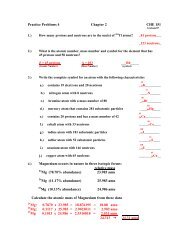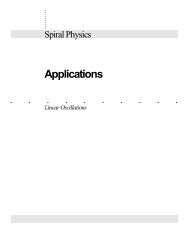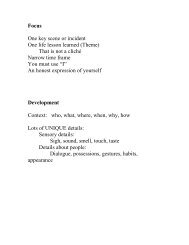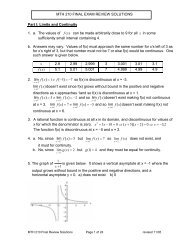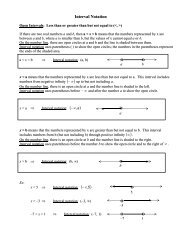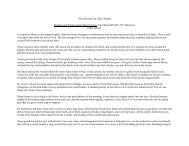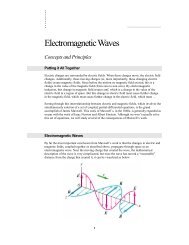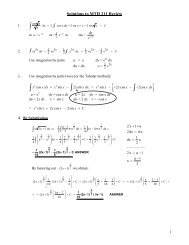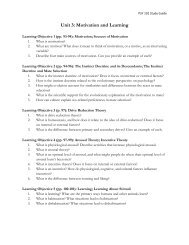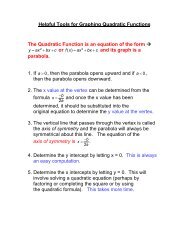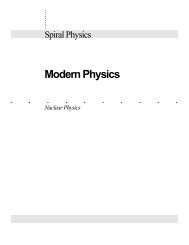Some Notes on Form and Function of the Line and Line Endings in ...
Some Notes on Form and Function of the Line and Line Endings in ...
Some Notes on Form and Function of the Line and Line Endings in ...
Create successful ePaper yourself
Turn your PDF publications into a flip-book with our unique Google optimized e-Paper software.
poem has transcended <strong>the</strong> banal. Likewise, Mary Oliver <strong>of</strong>ten uses l<strong>in</strong>e breaks to transform<br />
seem<strong>in</strong>gly unexcepti<strong>on</strong>al observati<strong>on</strong>s <strong>in</strong>to brilliant poetic utterances. One <strong>of</strong> her early poems,<br />
“Farm Country,” illustrates some aspects <strong>of</strong> her approach:<br />
I have sharpened <strong>the</strong> knives, I have<br />
Put <strong>on</strong> <strong>the</strong> heavy apr<strong>on</strong>.<br />
Maybe you th<strong>in</strong>k life is chicken soup, served<br />
In blue willow-pattern bowls.<br />
I have put <strong>on</strong> my boots <strong>and</strong> opened<br />
The kitchen door <strong>and</strong> stepped out<br />
Into <strong>the</strong> sunsh<strong>in</strong>e. I have crossed <strong>the</strong> lawn,<br />
I have entered<br />
The hen house.<br />
The first th<strong>in</strong>g a perceptive reader might notice <strong>in</strong> this poem is <strong>the</strong> way many <strong>of</strong> its l<strong>in</strong>e end<strong>in</strong>gs<br />
occur at unexpected or even awkward po<strong>in</strong>ts <strong>in</strong> <strong>the</strong> flow <strong>of</strong> <strong>the</strong> sentence. This c<strong>on</strong>spicuous<br />
organizati<strong>on</strong> suggests <strong>the</strong> l<strong>in</strong>es were <strong>in</strong>tenti<strong>on</strong>ally broken this way to yield specific results. For<br />
<strong>in</strong>stance, <strong>the</strong> <strong>in</strong>itial l<strong>in</strong>e, “I have sharpened <strong>the</strong> knives,” is followed by <strong>the</strong> reiterative phrase “I<br />
have” which—though grammatically l<strong>in</strong>ked to <strong>the</strong> rest <strong>of</strong> <strong>the</strong> sentence <strong>in</strong> l<strong>in</strong>e two—is reta<strong>in</strong>ed <strong>on</strong><br />
l<strong>in</strong>e <strong>on</strong>e to emphasize <strong>the</strong> pers<strong>on</strong>a’s blunt declarati<strong>on</strong> <strong>and</strong>, by extensi<strong>on</strong>, her determ<strong>in</strong>ati<strong>on</strong> 2 .<br />
Taken <strong>on</strong> its own, <strong>the</strong> sec<strong>on</strong>d l<strong>in</strong>e is a short <strong>and</strong> clear directive that fur<strong>the</strong>r underscores <strong>the</strong> t<strong>on</strong>e <strong>of</strong><br />
<strong>the</strong> poem’s purposed, no-n<strong>on</strong>sense voice. In <strong>the</strong> third l<strong>in</strong>e, “Maybe you th<strong>in</strong>k life is chicken soup,<br />
served,” <strong>the</strong> f<strong>in</strong>al word would be, <strong>in</strong> normal speech patterns, l<strong>in</strong>ked rhythmically to <strong>the</strong> group<strong>in</strong>g<br />
<strong>of</strong> words <strong>in</strong> <strong>the</strong> fourth l<strong>in</strong>e. Here, however, it is reta<strong>in</strong>ed <strong>on</strong> <strong>the</strong> third l<strong>in</strong>e to emphasize <strong>the</strong> image<br />
<strong>of</strong> some<strong>on</strong>e be<strong>in</strong>g served—an image that is central to <strong>the</strong> pers<strong>on</strong>a’s argument: after all, to th<strong>in</strong>k<br />
life is a bowl <strong>of</strong> chicken soup is <strong>on</strong>e th<strong>in</strong>g; to th<strong>in</strong>k that same bowl <strong>of</strong> chicken soup will be served<br />
to you without work<strong>in</strong>g for it is ano<strong>the</strong>r. The stress <strong>on</strong> “served” c<strong>on</strong>sciously changes <strong>the</strong> rhythm<br />
<strong>of</strong> <strong>the</strong> sentence <strong>and</strong>, fur<strong>the</strong>rmore, sets <strong>the</strong> values <strong>of</strong> <strong>the</strong> poetic voice apart from whomever <strong>the</strong><br />
pers<strong>on</strong>a is address<strong>in</strong>g. This unique tensi<strong>on</strong> between speaker <strong>and</strong> audience is made evident through<br />
<strong>the</strong> l<strong>in</strong>e break.<br />
Elsewhere, o<strong>the</strong>r l<strong>in</strong>e end<strong>in</strong>gs are similarly effective <strong>in</strong> communicat<strong>in</strong>g c<strong>on</strong>notati<strong>on</strong>s that might<br />
o<strong>the</strong>rwise go undetected. In <strong>the</strong> fifth l<strong>in</strong>e, <strong>the</strong> pers<strong>on</strong>a states:<br />
“I have put <strong>on</strong> my boots <strong>and</strong> opened”<br />
4



